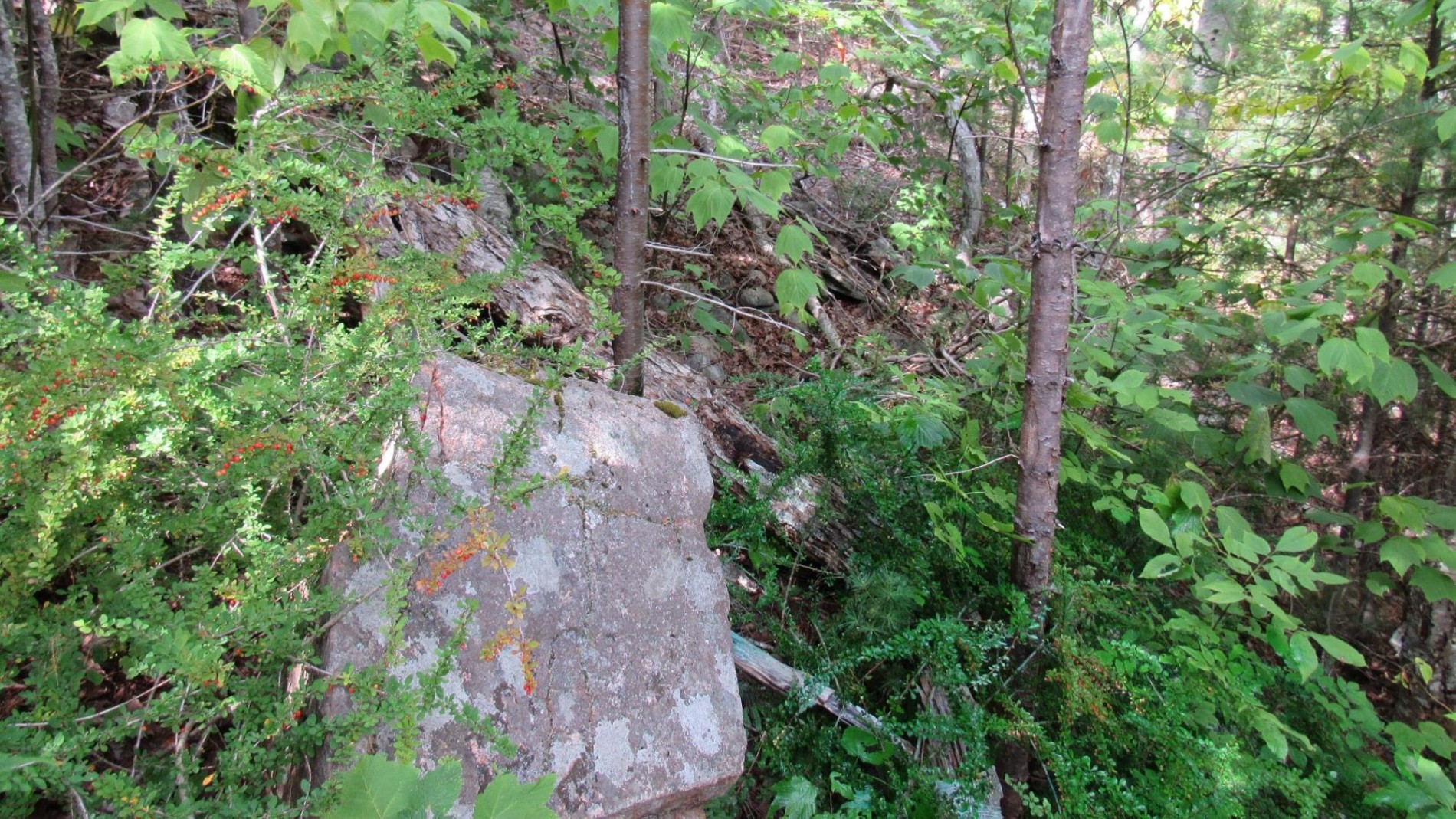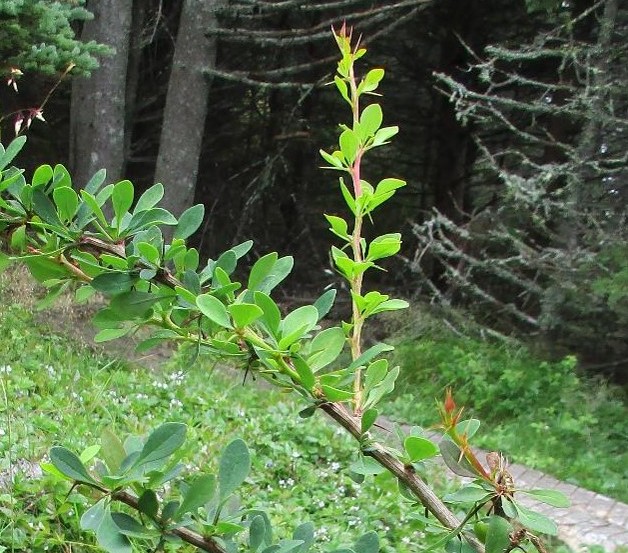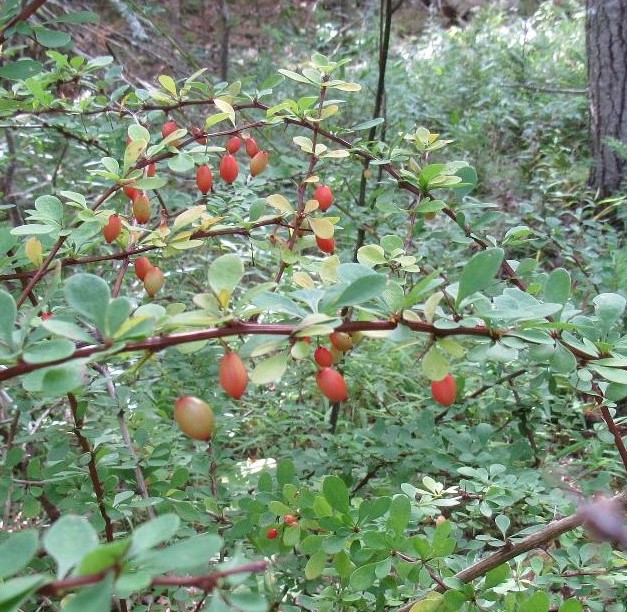Japanese barberry
(Berberis thunbergii)
Help support a diverse and thriving Mount Desert Island by taking action in your backyard!
Help support a diverse and thriving Mount Desert Island by taking action in your backyard!
This thorny shrub is often planted as a hedgerow but has spread to forests, forest edges, fields, and disturbed areas. They have small, pale yellow flowers and red, oblong berries. Their simple, alternate leaves turn red in fall. Unlike common barberry, Japanese barberry has single thorns that alternate along their stems.

Japanese barberry (Berberis thunbergii) is a thorny shrub often planted as a hedgerow, but it has spread to forests, forest edges, fields, and disturbed areas.

Unlike common barberry, Japanese barberry has single thorns that alternate along their stems.

Japanese barberry has small, pale yellow flowers and red, oblong berries. Their simple, alternate leaves turn red in fall.
Remove mechanically after leaf-out in early spring.
Dispose of plants responsibly.
Japanese barberry is likely to re-sprout. Repeat the above methods as needed to eliminate plants from your property.
Consider replacing with native woody shrubs with distinct berries like common winterberry (Ilex verticillata) or nannyberry (Viburnum lentago)
Learn even more about Japanese barberry on the maine.gov website: Japanese barberry